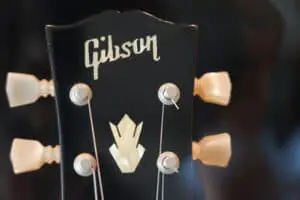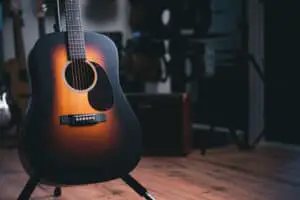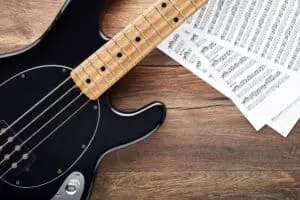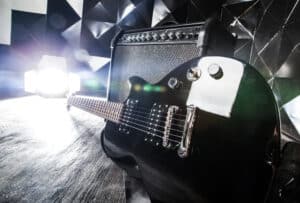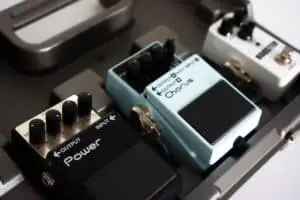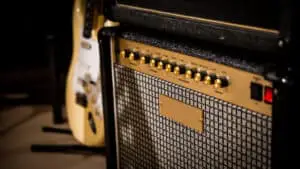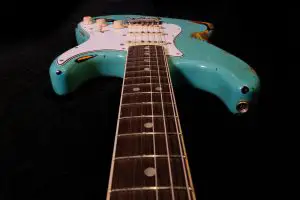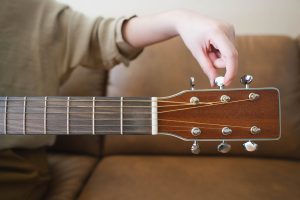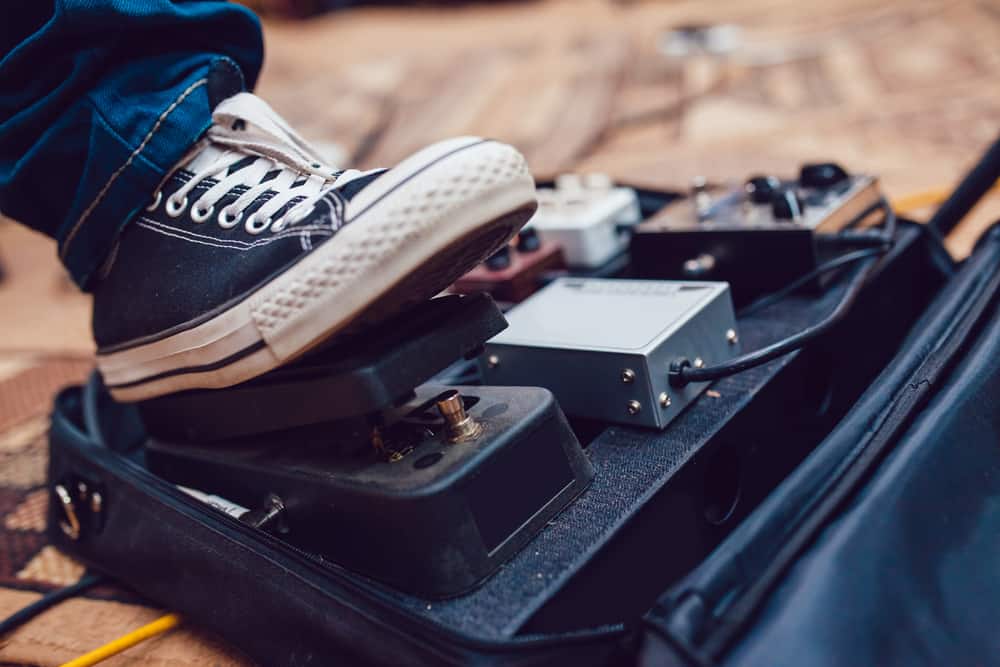
Electric guitars, ever-losing picks, and great amps are the best polyamorous relationship you could find in music. But guess who makes it all the spicier? Pedals!
There are not necessarily a must-have for every guitar player, but they are a convenient tool and will give you the craziest sound effects that you’d love on your live performances. You may not always require them, but in some cases, their presence might prove to be a valuable asset.
Electric guitar pedals are often discussed when first learning the instrument, and the question arises of how to connect a guitar pedal to a guitar. So how do you do this?
Connecting your guitar pedal to your guitar isn’t a big issue, and you can do it quickly.
There are no hard and fast rules for assembling your pedals for the most part. To properly set up guitar pedals, familiarize yourself with the fundamentals and then go out and experiment to discover the setup that best suits your musical tastes and goals.
Here, we’ll look at all the possible steps you can take to connect your guitar pedal carefully to your guitar.
How Exactly Do Guitar Pedals Work?
Like with every electrical/electronic musical setup, signal transmission is at the center of the working principles of these tools. The guitar pedals work by causing an alteration to the signal that is being sent out into their input which is solely based on the circuit design.
Too much for your head, huh?
In simple everyday music terms, modulations, delays, reverb, flanger, and any effect you might be looking for can be added to your guitar using guitar pedals.
Like a high gain amplifier, some effects pedals may generate distortion or overdrive sounds by cutting off the signal. Once again, this can sound like a highly aggressive form of rock & roll or metal to match the style.
You may experiment with various sounds with guitar effects pedals and expand your musical palette. Many professional guitarists use them because of their unique tone. It doesn’t matter what genre of music you perform; there are pedals on the market now that are a great match.
How To Connect Your Guitar Pedals
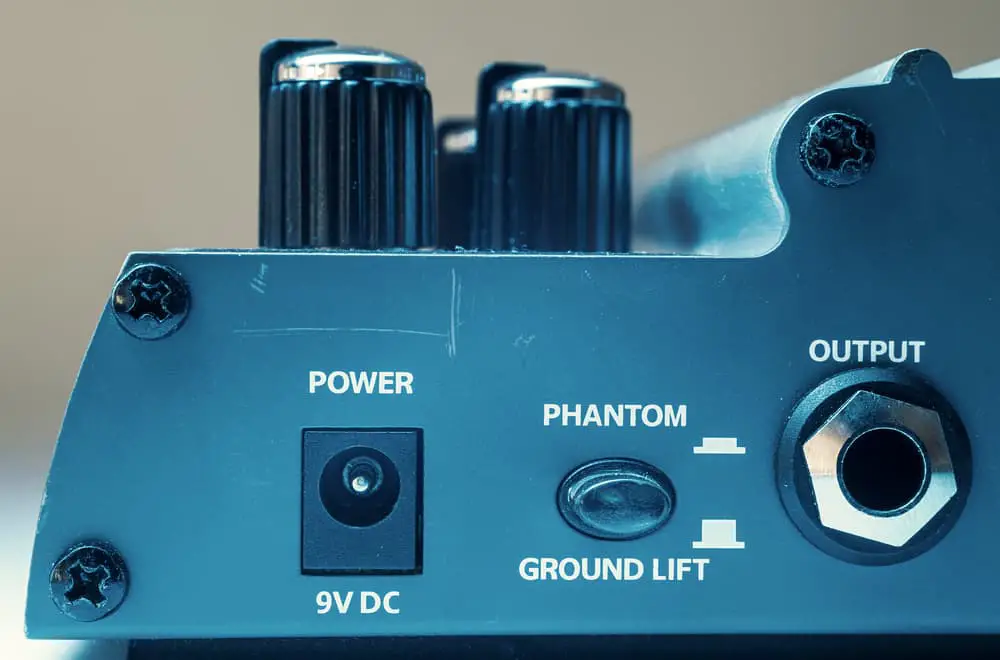
To get the most out of your guitar pedals, you must connect them to your instrument and amp.
A central location between your guitar and amp ensures that your sound is altered before it enters and is played via your pedals’ speakers or audio monitors.
Two guitar amp leads are required to connect your pedals to your instrument and amplifier.
You can follow these instructions to ensure that everything is working correctly.
- If you’re using an amp, make sure it’s off.
- Ensure that your guitar wire is connected to your guitar.
- Plug the other end into your pedal’s “input” side.
- Connect a second guitar wire to your pedal’s “output” side.
- You should plug the other end into your amplifier’s “input” jack.
Connecting Guitar Pedals To Both Amp and Guitar
It’s not difficult to hook up a guitar amplifier. Simply connect the cable to the instrument’s input and the amplifier’s output.
Afterward, you’re ready to go! You will, however, require some cords if you want to use a guitar effects pedal or a few.
For the most part, the input on guitar pedals is on the right. Keeping in mind that this is the input side is helpful. It doesn’t matter if your device has jacks on top; the right side is where you’ll plug it in. If you’re unsure, check your user manual just in case your boutique unit deviates from this standard.
To connect your guitar to the input, you’ll need a somewhat long instrument cable. You’ll need an instrument cable with a minimum length of ten feet. Anything less will just serve to irritate.
The output jack is located on the opposite end of the device. The amplifier will receive a signal that has been altered by using this jack. The output jack on your guitar pedal should be connected to the input connector on your amplifier once more.
You’ll need a different cable length depending on how far away from your amplifier is. For this purpose, a 15 to 25-foot cord isn’t a bad idea.
That’s all there is! You’re set to send a signal in the proper direction. A mono connection is what it’s called.
What’s the Best Pedal To Get?
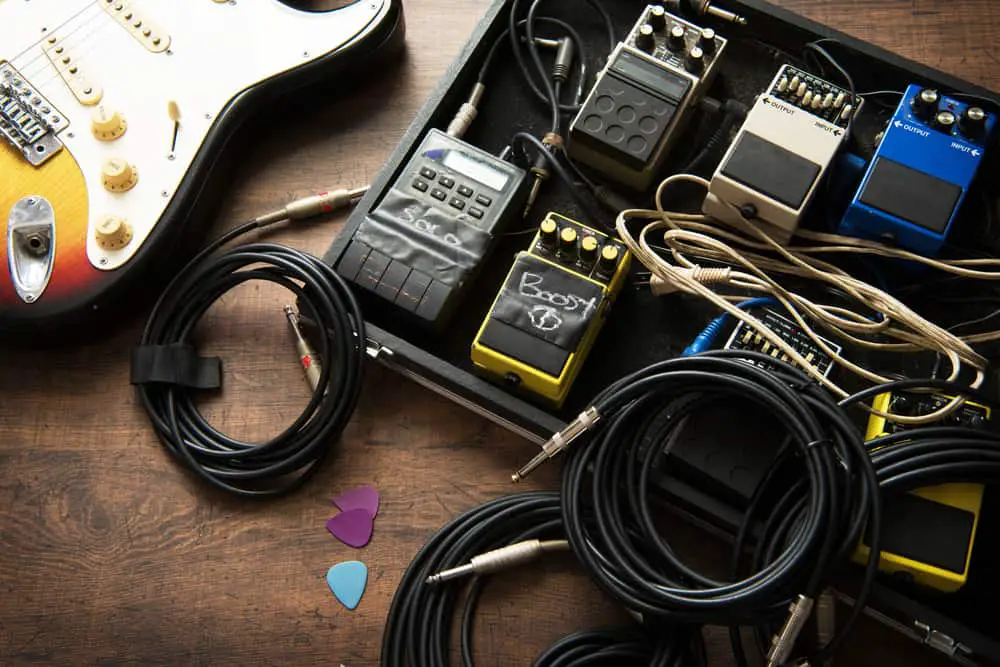
If you plan to use a lot of pedals, you’ll need to think about the best way to arrange them. The sound produced by a pedal depends on where it is in the pedal chain.
There are no hard and fast rules regarding pedals chain order, but many guitarists prefer the following setup, so give it a shot and see what happens. Starting with the guitar, it progresses to the amplifier.
Pedals For Tuning in Your Guitar
Any effects on your guitar should not interfere with the tuning setup.
Many other EQ pedal options may help you find the appropriate mix of mids and bass that you can use in conjunction with different effects.
A compressor is a device that allows you to adjust the sound level of your guitar and eliminate any undesired fluctuations produced by the weight of your pick.
Distortion and Overdrive
Placing these pedals in this position may distort your guitar’s tone before applying more dramatic effects like modulation, delay, reverb, etc.
In the conclusion of your chain, you should use modulation pedals such as phaser, tremolo, and chorus to provide even more distinctive effects.
Time-related pedals such as delay and reverb should be placed after other effects to avoid any other effects altering the echo.
Conclusion
Getting a guitar pedal is always a good choice as it affords you innumerable possibilities with the lengths you can go with your guitar. Getting a pedal is the first step; connecting it to your guitar is what we have covered. We hope this article has been helpful.

